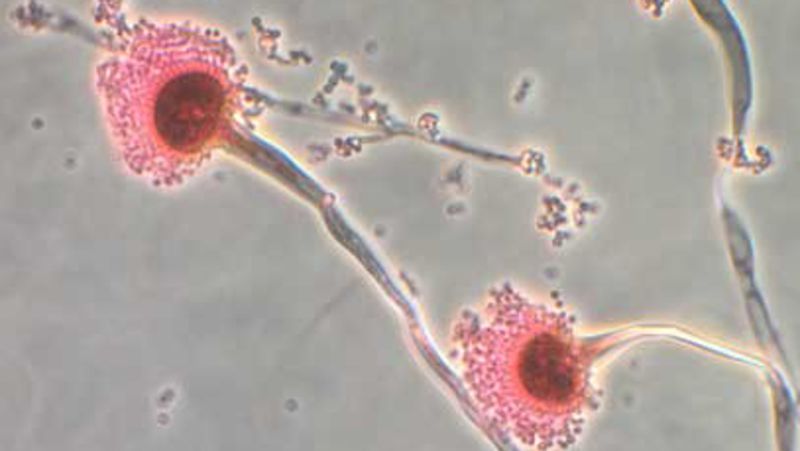Internal Fungus Infections: The Rising Threat Of A Climate Change-Fueled Pandemic

Welcome to your ultimate source for breaking news, trending updates, and in-depth stories from around the world. Whether it's politics, technology, entertainment, sports, or lifestyle, we bring you real-time updates that keep you informed and ahead of the curve.
Our team works tirelessly to ensure you never miss a moment. From the latest developments in global events to the most talked-about topics on social media, our news platform is designed to deliver accurate and timely information, all in one place.
Stay in the know and join thousands of readers who trust us for reliable, up-to-date content. Explore our expertly curated articles and dive deeper into the stories that matter to you. Visit Best Website now and be part of the conversation. Don't miss out on the headlines that shape our world!
Table of Contents
Internal Fungus Infections: The Rising Threat of a Climate Change-Fueled Pandemic
The world is facing a growing health crisis, one that's silently creeping into our lives, fueled by the escalating effects of climate change: the rise of invasive fungal infections. While viruses and bacteria often dominate headlines, the threat posed by fungi is increasingly urgent and deserves immediate attention. This isn't just about athlete's foot; we're talking about life-threatening internal infections that are becoming more prevalent and more resistant to treatment.
The Perfect Storm: Climate Change and Fungal Infections
Climate change creates a perfect breeding ground for fungi. Rising temperatures, increased humidity, and more frequent extreme weather events are expanding the geographic range of many fungal species, allowing them to thrive in areas previously unsuitable. This expansion brings them into closer contact with human populations, increasing the risk of infection.
- Higher Temperatures: Many fungi flourish in warmer conditions. As global temperatures rise, so does the potential for fungal growth and spread.
- Increased Humidity: High humidity provides the ideal environment for fungal spores to germinate and proliferate. Changes in rainfall patterns contribute significantly to this.
- Extreme Weather Events: Flooding and hurricanes can disrupt ecosystems, creating new opportunities for fungal pathogens to spread and infect vulnerable populations.
The Most Dangerous Fungi: A Growing List of Threats
Several fungal species are particularly concerning due to their increasing prevalence and resistance to treatment. These include:
- Candida auris: This fungus is notoriously resistant to antifungal drugs and can cause bloodstream infections, posing a significant threat to individuals with weakened immune systems. The CDC has identified C. auris as a serious public health threat. [Link to CDC C.auris information]
- Aspergillus fumigatus: This ubiquitous mold can cause severe lung infections, particularly in individuals with compromised immune systems or pre-existing lung conditions. Climate change is likely contributing to its increased prevalence.
- Cryptococcus neoformans: This fungus can cause meningitis, a potentially fatal infection of the brain and spinal cord. Its spread is linked to environmental factors exacerbated by climate change.
Beyond the Individual: A Global Public Health Emergency
The increasing threat of invasive fungal infections represents a significant challenge to global public health. The World Health Organization (WHO) has recognized the growing urgency of this issue, highlighting the need for increased research, improved diagnostic tools, and the development of new antifungal drugs. [Link to WHO fungal infections information]
What Can We Do? A Multifaceted Approach
Combating this growing threat requires a multifaceted approach:
- Improved Surveillance: Enhanced monitoring of fungal infections is crucial to track their spread and identify emerging threats.
- Development of New Antifungal Drugs: Urgent research is needed to develop new drugs effective against resistant fungal strains.
- Climate Change Mitigation: Addressing climate change is paramount to reducing the environmental factors contributing to the rise of fungal infections. This involves transitioning to cleaner energy sources and implementing sustainable practices.
- Public Awareness: Raising public awareness about the risks of fungal infections and the importance of prevention is crucial.
Conclusion: A Call to Action
The rise of internal fungus infections is a stark warning of the devastating consequences of climate change. We must act now to mitigate the effects of climate change, improve surveillance and treatment options, and raise global awareness of this emerging pandemic. Ignoring this threat is not an option; the future of global health depends on our collective response. Let's work together to prevent this silent killer from becoming a global catastrophe.

Thank you for visiting our website, your trusted source for the latest updates and in-depth coverage on Internal Fungus Infections: The Rising Threat Of A Climate Change-Fueled Pandemic. We're committed to keeping you informed with timely and accurate information to meet your curiosity and needs.
If you have any questions, suggestions, or feedback, we'd love to hear from you. Your insights are valuable to us and help us improve to serve you better. Feel free to reach out through our contact page.
Don't forget to bookmark our website and check back regularly for the latest headlines and trending topics. See you next time, and thank you for being part of our growing community!
Featured Posts
-
 Uncertainty Remains Will The Two Child Benefit Cap Be Scrapped
May 26, 2025
Uncertainty Remains Will The Two Child Benefit Cap Be Scrapped
May 26, 2025 -
 Giancarlo Stanton To Seattle Mariners Rumors Heat Up After Yankees Exit
May 26, 2025
Giancarlo Stanton To Seattle Mariners Rumors Heat Up After Yankees Exit
May 26, 2025 -
 Russia Launches Fresh Aerial Assault On Kyiv Following Prisoner Release
May 26, 2025
Russia Launches Fresh Aerial Assault On Kyiv Following Prisoner Release
May 26, 2025 -
 Remembering George Floyd Honoring His Life And Memory
May 26, 2025
Remembering George Floyd Honoring His Life And Memory
May 26, 2025 -
 Bbc Bike Theft In The Hague Reporting The Crime And Recovery Chances
May 26, 2025
Bbc Bike Theft In The Hague Reporting The Crime And Recovery Chances
May 26, 2025
Latest Posts
-
 Henrique Rocha Vitoria Historica Na Estreia Em Roland Garros
May 30, 2025
Henrique Rocha Vitoria Historica Na Estreia Em Roland Garros
May 30, 2025 -
 First Odi England Vs West Indies Live Streaming And Highlights
May 30, 2025
First Odi England Vs West Indies Live Streaming And Highlights
May 30, 2025 -
 Giants Causeway Visitors Respect The Ancient Stones
May 30, 2025
Giants Causeway Visitors Respect The Ancient Stones
May 30, 2025 -
 Us Student Visa Appointments Suspended Expanded Social Media Screening Planned
May 30, 2025
Us Student Visa Appointments Suspended Expanded Social Media Screening Planned
May 30, 2025 -
 Remembering Rick Derringer A Celebrated Musicians Legacy
May 30, 2025
Remembering Rick Derringer A Celebrated Musicians Legacy
May 30, 2025
